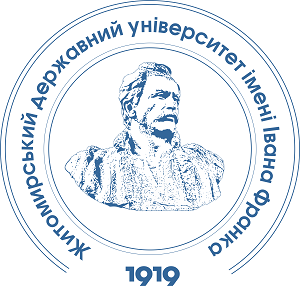PROSPECTS FOR RECREATIONAL AND TOURIST USE OF NATURAL MONUMENTS OF THE DUBNO DISTRICT OF THE RIVNE REGION
DOI:
https://doi.org/10.32782/naturaljournal.13.2025.11Keywords:
natural monument, natural and anthropogenic recreational and tourist resources, nature reserve fund, recreation, tourism, Dubno district, Rivne regionAbstract
The relevance of the study is due to the growing interest in ecotourism and the need to effectively use the natural and recreational potential of the regions, in particular, the Rivne region. Analysing the possibilities of recreational and tourist use of the natural monuments of the Dubno district is an important step towards formulating strategies for the sustainable development of the region. The aim of the study is to determine the prospects for recreational and tourist use of natural monuments in the Dubno district of the Rivne region. To achieve this goal, the following research methods were used: analysis, synthesis, descriptive, cartographic, statistical, generalisation, and systematisation. The natural monuments of the Dubno district account for 26.2% of the total number of nature reserves in the territory and 1.8% of the total area of the district's nature reserve fund. Botanical natural monuments in the Dubno district account for 76.5% of the total number of natural monuments in the territory and 75.7% of the total area of natural monuments in the district. Despite the presence of different types of natural monuments, their recreational and tourist use remains fragmented and mostly local, without an integrated development concept and proper infrastructure. Dubno district has significant potential for creating ecological routes and trails, developing specialised types of tourism, and engaging the local population in tourism activities. The development of a modern eco-tourism infrastructure and an effective marketing system is promising, which will help to increase the attractiveness of the territory. The development of recreational and tourist use of the natural monuments of the Dubno district requires a comprehensive approach that includes environmental, economic, and social aspects. The scientific novelty of the research results lies in the substantiation of promising directions of recreational and tourist use of natural monuments of the Dubno district. The results obtained can be useful as a scientifically sound basis for further in-depth development of regional strategies and district tourism development programmes in terms of the use of natural and recreational potential.
References
Безсмертнюк Т.П., Мельнійчук М.М. Туристсько-рекреаційне використання природно-заповідного фонду північно-західної України : монографія. Луцьк : ПП Іванюк В.П., 2018. 168 с.
Бейдик О.О. Рекреаційно-туристські ресурси України: методологія та методика аналізу, термінологія, районування : монографія. Київ : Видавничий центр КНУ ім. Тараса Шевченка, 2001. 395 с.
Заповідні об’єкти Рівненщини. Природно-заповідний фонд області в розрізі районів. Департамент екології та природних ресурсів Рівненської облдержадміністрації. [Електронний ресурс] URL: https://www.ecorivne.gov.ua/reserve/?sid=661 (дата звернення: 21.07.2025).
Кучер П.В., Ільїн Л.В. Природно-антропогенні рекреаційно-туристичні ресурси Рівненської області: оцінювання, рейтингування. Географічний часопис Волинського національного університету імені Лесі Українки. 2024. № 3(3). С. 88–94. https://doi.org/10.32782/geochasvnu.2024.3.10.
Олександрівка (пам’ятка природи). Рівненщина. Rivne tourist region. [Електронний ресурс] URL: https://rivne.travel/locations/oleksandrivka-pamatka-prirodi (дата звернення: 21.07.2025).
Парк «Зарічненський». Рівненщина. Rivne tourist region. [Електронний ресурс] URL: https://rivne.travel/locations/park-zaricnenskij (дата звернення: 24.07.2025).
Природно-заповідний фонд Рівненської області в розрізі територіальних громад. Природно-заповідний фонд України. [Електронний ресурс] URL: https://pzf.land.kiev.ua/pzf-obl-17.html (дата звернення: 21.07.2025).
Про затвердження Положення про ботанічну пам’ятку природи загальнодержавного значення Урочище «Хвороща» : Наказ Міністерства екології та природних ресурсів України від 21.11.2011 р. № 463 / Верховна Рада України. [Електронний ресурс] URL: https://zakon.rada.gov.ua/rada/show/v0463737-11#Text (дата звернення: 24.07.2025).
Про затвердження Положення про зоологічну пам’ятку природи загальнодержавного значення «Урочище «Олександрівка» : Наказ Міністерства екології та природних ресурсів України від 28.11.2011 р. № 480 / Верховна Рада України. [Електронний ресурс] URL: https://zakon.rada.gov.ua/rada/show/v0480737-11#Text (дата звернення: 24.07.2025).
Про затвердження Положення про рекреаційну діяльність у межах територій та об’єктів природно-заповідного фонду України : Наказ Міністерства захисту довкілля та природних ресурсів України від 26.07.2022 р. № 256 / Верховна Рада України. [Електронний ресурс] URL: https://zakon.rada.gov.ua/laws/show/z1043-22#Text (дата звернення: 21.07.2025).
Про природно-заповідний фонд України : Закон України від 16.06.1992 р. № 2456- ХII. Дата оновлення : 04.04.2025 / Верховна Рада України. [Електронний ресурс] URL: https://zakon.rada.gov.ua/laws/show/2456-12#Text (дата звернення: 21.07.2025).
Про створення пам’яток природи місцевого значення : Рішення Рівненської обласної ради від 16.02.2024 р. № 869 / Рівненська обласна рада. [Електронний ресурс] URL: https://ror.gov.ua/rishennya-oblasnoyi-radi-8-sklikannya/869-pro-stvorennya-pamyatok-prirodi-miscevogo-znachennya-1708521672 (дата звернення: 24.07.2025).
Costa J., Gomes A., Stokes M., Saraiva M. Recreational use of protected areas: spatiotemporal insights from the Wikiloc mobile app. Current Issues in Tourism. 2024. Volume 27, Issue 22. Pp. 3978–3998. https://doi.org/10.1080/13683500.2024.2329278.
Haukeland J. V., Fredman P., Tyrväinen L., Siegrist D., Lindberg K. Prospects for nature-based tourism: identifying trends with commercial potential. Journal of Ecotourism. 2023. Pp. 1–18. https://doi.org/10.1080/14724049.2023.2178444.
Heagney E. C., Rose J. M., Ardeshiri A., Kovač M. Optimising recreation services from protected areas – Understanding the role of natural values, built infrastructure and contextual factors. Ecosystem Services. 2018. Volume 31, Part C. Pp. 358–370. https://doi.org/10.1016/j.ecoser.2017.10.007.







